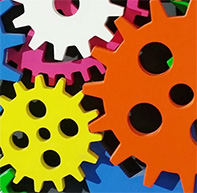Tip #1800: Use Unreal Engine to Re-create Nature
… for Visual Effects
Tip #1800: Use Unreal Engine to Re-create Nature
Larry Jordan – LarryJordan.com
The Unreal engine can make the artificial look natural.


In this screen shot, the terrain (hills, mountains, etc.) was fully sculpted in Unreal Engine with the landscape editing mode, using brushes to sculpt, smooth, and flatten areas in the map.
The landscape material and the vegetation were created with the Brushify toolkit. Finally, the props—rocks, cliffs, and manmade materials—are the result of customized elements and assets from the Megascan library by Quixel.
This article first appeared in ShutterStock.com. This is a summary.
In this first article of a three-part series, we’ll learn how to produce stunning, natural compositions in Unreal Engine. In particular, we’ll focus on aspects of planning an environment while making an eye-catching, well-balanced composition.
Here are the key points this article covers:
- Planning the Environment. One of the biggest challenges while creating natural environments is to plan your scene from the start. Begin with big and bare areas and then develop the details in those macro zones by adding vegetation, assets, and so on.
- Sculpting Terrain and Set Dressing. Unreal Landscape offers a series of tools for sculpting maps and adding scattered elements like flowers, grass, or anything else you want to import as an asset in your engine.
- The Importance of Biomes. The art of compositing a good environment is also connected with the presence of biomes: a sort of habitat for organisms and the related terrain characteristics. This way we can have different zones—forests instead of grasslands, desert, etc.
- Shot Composition: Thinking Like a Photographer. Once you’ve created your own landscape, you want to showcase your work in its best light.
Other subjects include:
- The Choice of an Appropriate Vantage Point.
- Low-Angle Shots
- Depth of Field
- Positive and Negative Space
That brings us to the end of the first article of a three-part series. We explained how to plan a 3D environment and how to collect photo references with details. We then moved on to talk about the sculpting in Unreal Engine and set dressing with the support of Brushify.


Leave a Reply
Want to join the discussion?Feel free to contribute!